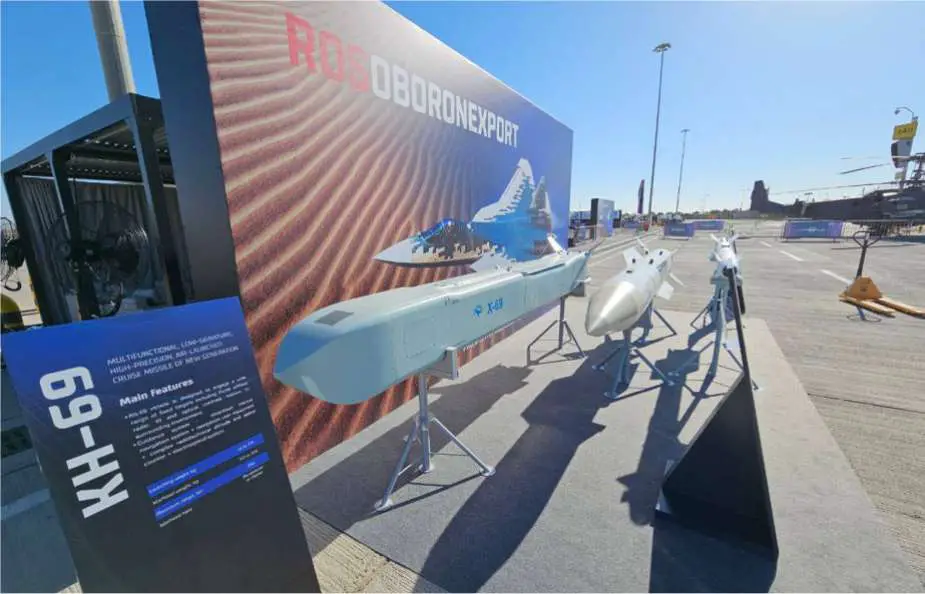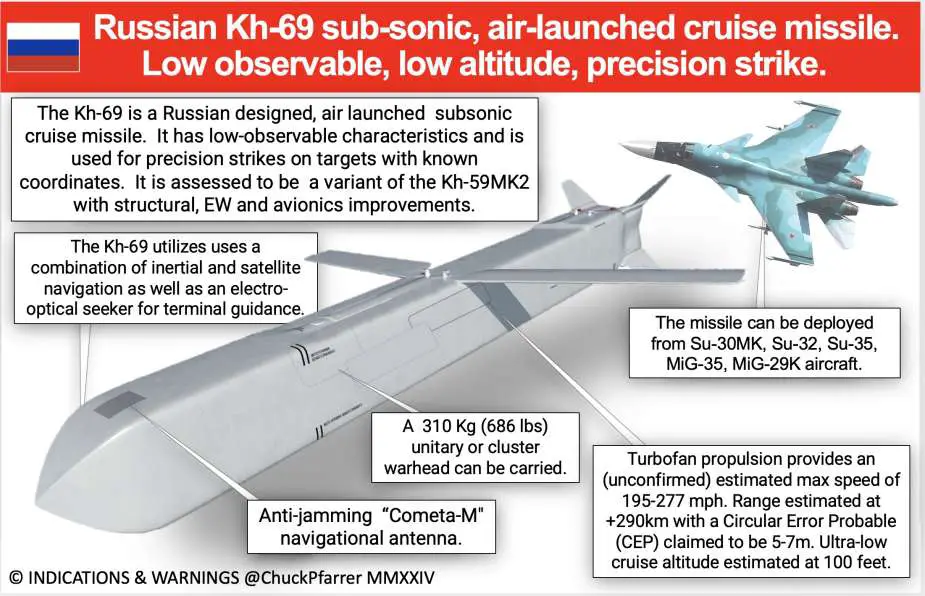- Army
- Conflicts in the world
- Israel - Iran conflict 2025
- Pakistan - India Conflict 2025
- Russia Ukraine War 2022
- Libya conflict day by day
- HAMAS - Israel War 2023
- Operation Serval in Mali French Army
- Sangaris operation Central African Republic
- Sangaris opération militaire République Centreafrique
- Ukraine - Russia conflict
- Syria conflict news
- Defence & Security Industry Technology
- Armies in the world
- Analysis Defense and Security Industry
- Conflicts in the world
- Navy
- Air
Discover Combat Capabilities of Russia's New Kh-69 Cruise Missile Used To Strike Ukrainian Power Plant
On April 11, 2024, the Russian military utilized the newly deployed Kh-69 cruise missile in a strike against the Ukrainian Trypillia Thermal Power Plant, demonstrating its advanced combat capabilities. This article aims to review the technical and combat capabilities of the newly utilized Russian-made Kh-69 cruise missile. This Russian-designed, air-launched subsonic missile is a variant of the older Kh-59, enhanced with significant improvements in structure, electronic warfare, and avionics. (Thanks to Chuck Pfarrer X Account for the graphic)
Follow Army Recognition on Google News at this link

The Russian-made Kh-69 cruise missile was unveiled in November 2023 at the Dubai air Show in United Arab Emirates. (Picture source X Account Chronology22)
The results of its strikes indicate its capability to penetrate the depleted Ukrainian air defenses.
The Kh-69 is an air-launched subsonic cruise missile, designed by Russian defense engineers to carry out precision strikes on fixed targets with predetermined coordinates. This missile is a further development of the Kh-59, featuring significant enhancements in its structural design, electronic warfare capabilities, and avionics systems. The missile was unveiled for the first time to the public by the Russian State Defense Company Rosoboronexport during the Dubai Air Show that was held in the United Arab Emirates in November 2023.
Measuring 4.19 meters in length, the Kh-69 has a unique rectangular fuselage with a navigation antenna positioned at the front and an explosive charge located centrally. The missile is equipped with four small control wings at the rear and two larger wings that deploy upon launch, giving it a wingspan of 2.45 meters.
For navigation, the missile utilizes a sophisticated combination of inertial and satellite systems, supplemented by an electro-optical seeker for terminal guidance, ensuring high-precision targeting with a Circular Error Probable (CEP) of just 5 to 7 meters. It is capable of carrying either a 310 kg unitary or cluster payload and features an anti-jamming "Cometa-M" navigational antenna, enhancing its resilience against electronic countermeasures.
The Kh-69 can be launched from multiple Russian fighter aircraft, including the Su-30Mk, Su-32, Su-35, MiG-35, and MiG-29K. It operates within a launch weight of 770 kg and can be deployed from altitudes ranging from 200 meters to 11 kilometers. With a turbofan engine, the missile's speed ranges from 750 to 1,000 kilometers per hour, and it has a maximum range of 290 kilometers, maintaining an ultra-low cruise altitude of about 100 feet.
The deployment of the Kh-69 marks a significant step in Russia's strategic capabilities, bridging the gap between short-range munitions and strategic-level cruise missiles. This incident at Trypillia Thermal Power Plant not only underscores the operational readiness of the Kh-69 but also highlights Russia's ongoing development and refinement of precision-guided weaponry.

Technical graphic of the Russian-made Kh-69 cruise missile (Picture source X Account Chuck Pfarrer)
News Russia Ukraine War


























